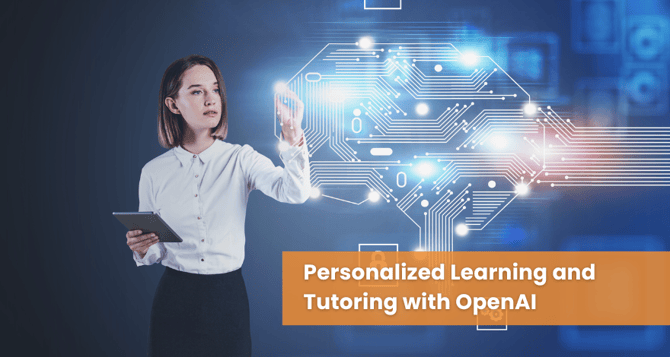OpenAI in Education: A New Era of Personalized Learning
A New Era of "Personalized Learning and Tutoring" denotes a revolutionary age in education, promoting individualized learning pathways and specialized tutoring to enhance the educational journey.

The realm of education is undergoing a transformative journey with the integration of OpenAI, ushering in an era of personalized learning and tutoring. This article explores the profound impact of OpenAI in education, delving into the principles behind it and providing technical implementations using Node.js.
The Role of OpenAI in Education
OpenAI's advanced language models play a pivotal role in reshaping the educational landscape. From personalized learning experiences to intelligent tutoring systems, OpenAI brings forth innovative solutions that cater to individual student needs and foster a more engaging and effective learning environment.
Technical Implementation:
Integrating OpenAI for Personalized Learning with Node.js:
Let's explore the technical aspects of integrating OpenAI into educational applications. For this example, we'll focus on creating an AI-powered language-learning assistant.
Node.js Implementation
1.) Set Up Your Development Environment
Begin by setting up your Node.js development environment and installing the required packages.
2.) Create an Express Server for Language Learning Assistant
Set up an Express.js server to handle language learning queries using OpenAI.
3.) Run Your App
Run your Node.js server using the following command:
Your language learning assistant system should now be accessible at `http://localhost:3000/language-learning-assistant` or the specified port.
Applications of OpenAI in Education
1.) Personalized Learning Paths
OpenAI enables the creation of adaptive learning systems that tailor educational content based on individual student progress and preferences.
2.) Intelligent Tutoring Systems
AI-driven tutoring systems can provide real-time feedback, assistance, and explanations to students, enhancing the learning experience.
3.) Automated Grading and Feedback
OpenAI models can assist in automating the grading process, providing instant feedback to students and teachers.
4.) Language Learning Support
AI-powered language learning assistants can assist students in improving language skills through interactive conversations and feedback.
Considerations and Best Practices
1.) Student Privacy
Adhere to strict privacy standards when handling student data, ensuring compliance with educational privacy regulations.
2.) Curriculum Alignment
Align AI-driven educational content with established curriculum standards to enhance teaching and the relevance and effectiveness of learning materials.
3.) Continuous Model Training
Regularly update AI models with the latest educational content and methodologies to ensure accurate and up-to-date assistance.
4.) Human-AI Collaboration
Emphasize the collaboration between human educators and AI systems, recognizing the unique strengths of both.
5.) Accessibility
Ensure that AI-powered educational tools are accessible to students with diverse learning needs.
Get Custom AI Development Solutions for Your Business!
Stay ahead in the digital era by leveraging our advanced AI development solutions.
Conclusion
OpenAI's foray into education marks a significant leap towards personalized and intelligent learning experiences. By integrating OpenAI into educational applications, developers can create tools that cater to the individual needs of students, fostering a more engaging and effective learning journey.
The fusion of Node.js, OpenAI, and education technologies paves the way for a future where education is not just instructive but adaptive, responsive, and tailored to the unique strengths and challenges of each student.


%201-1.webp)


.png?width=344&height=101&name=Mask%20group%20(5).png)
















